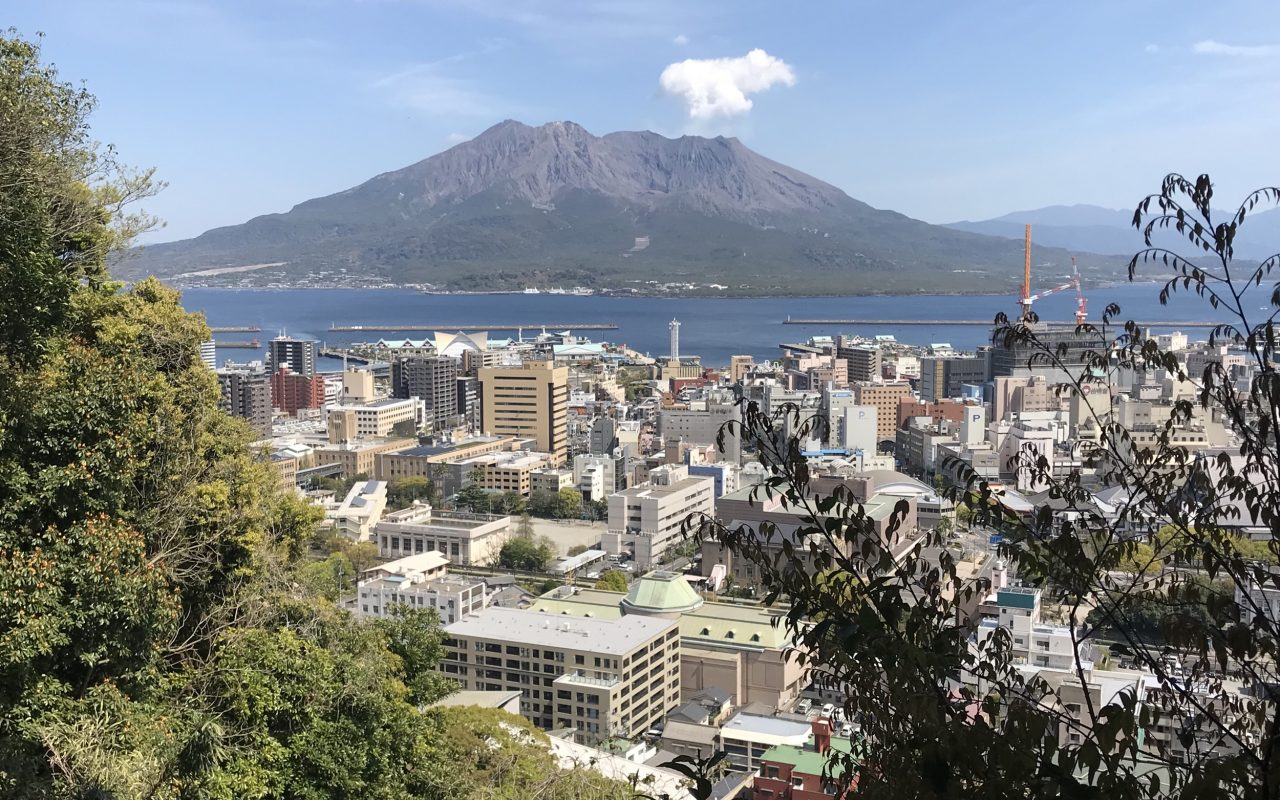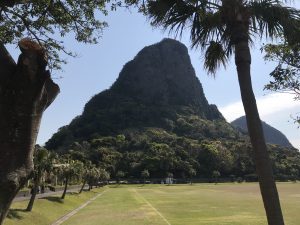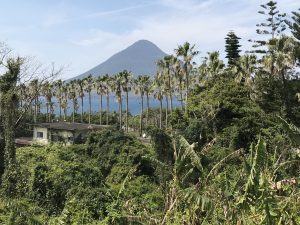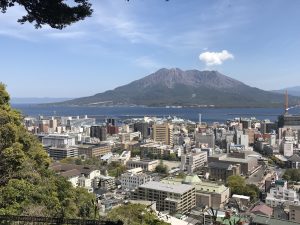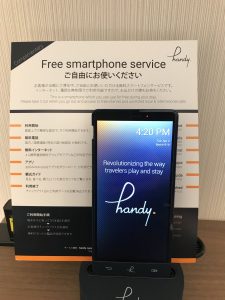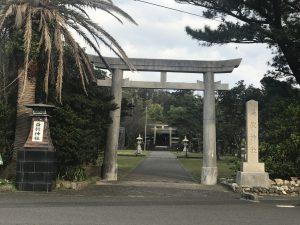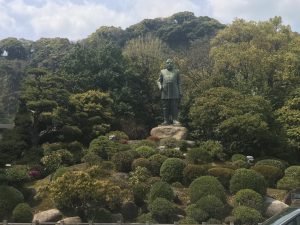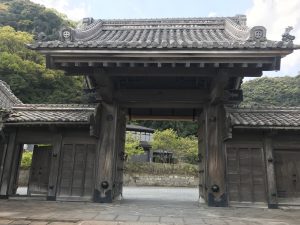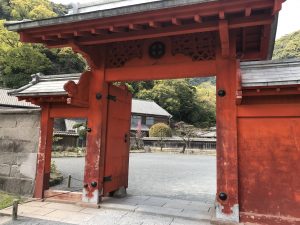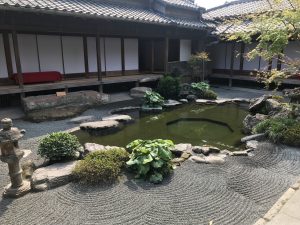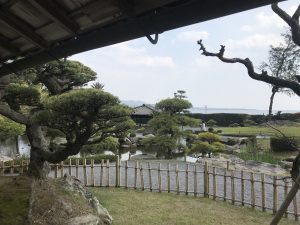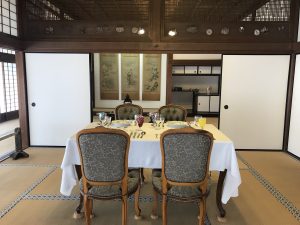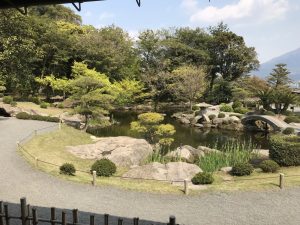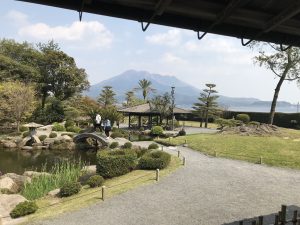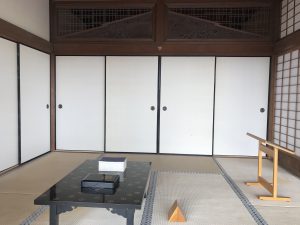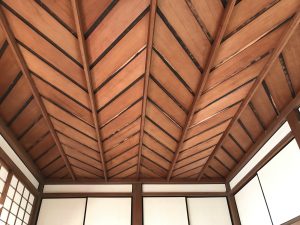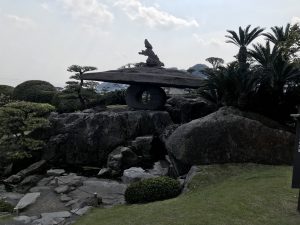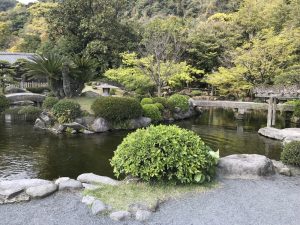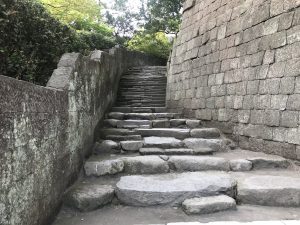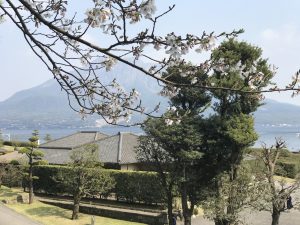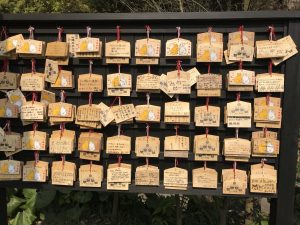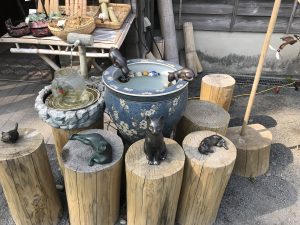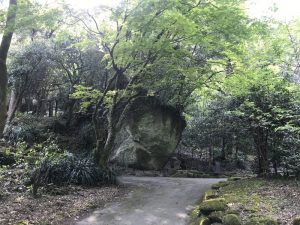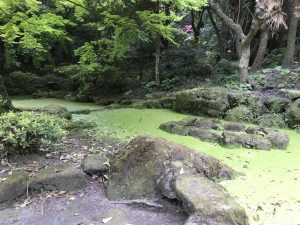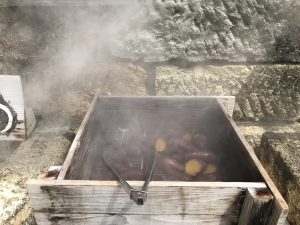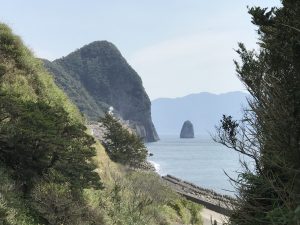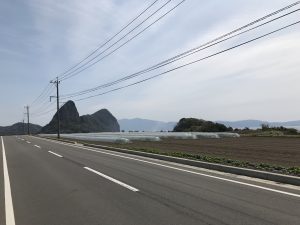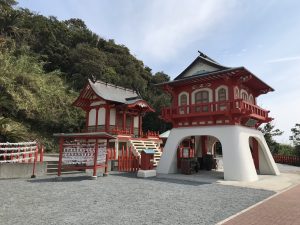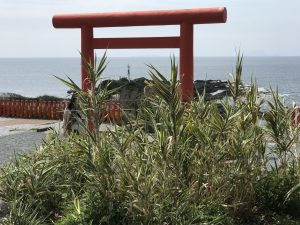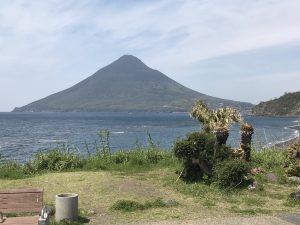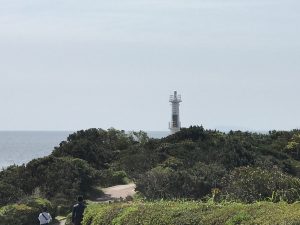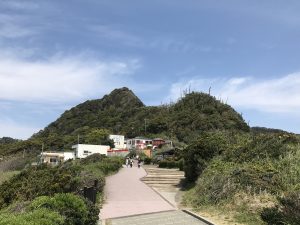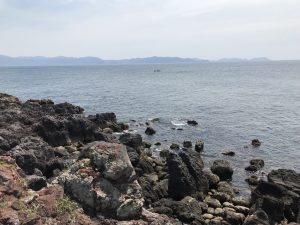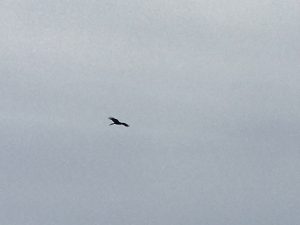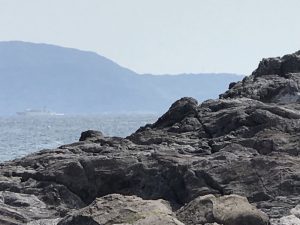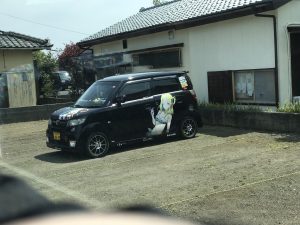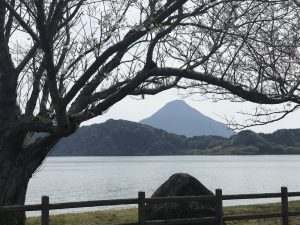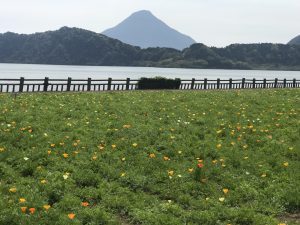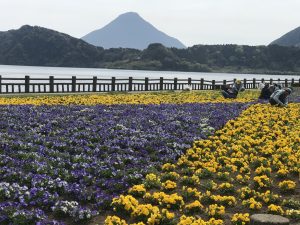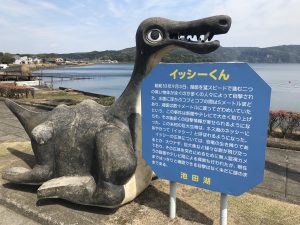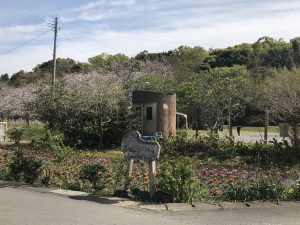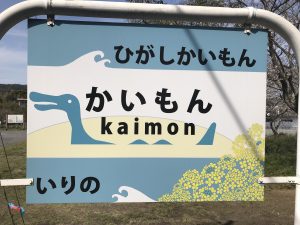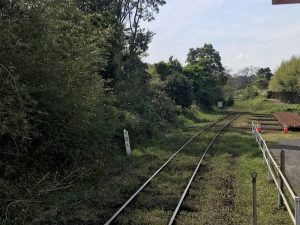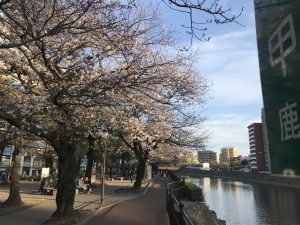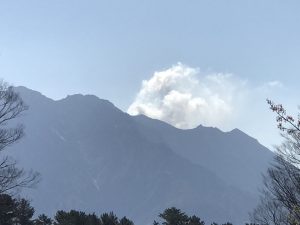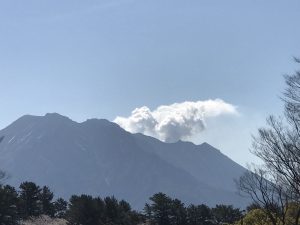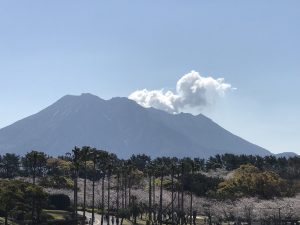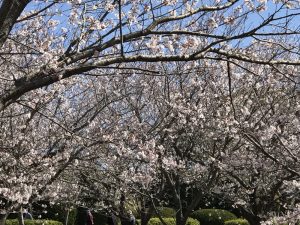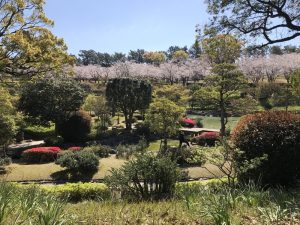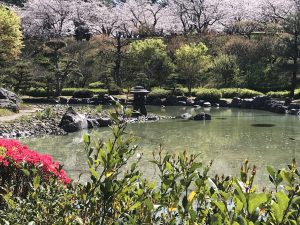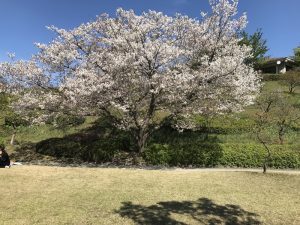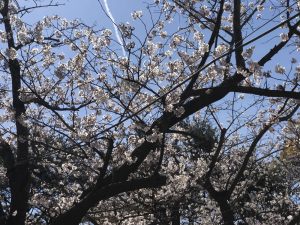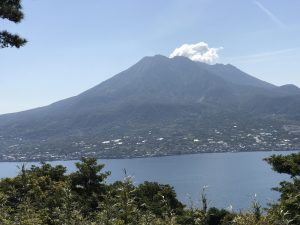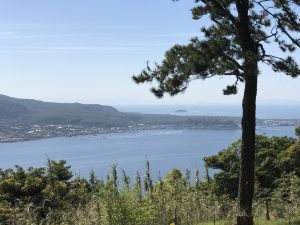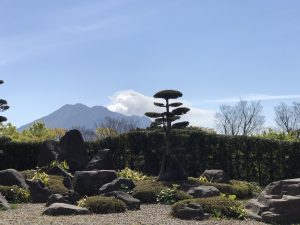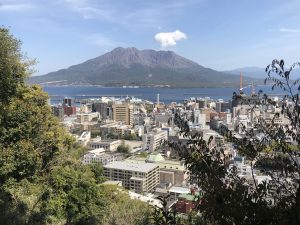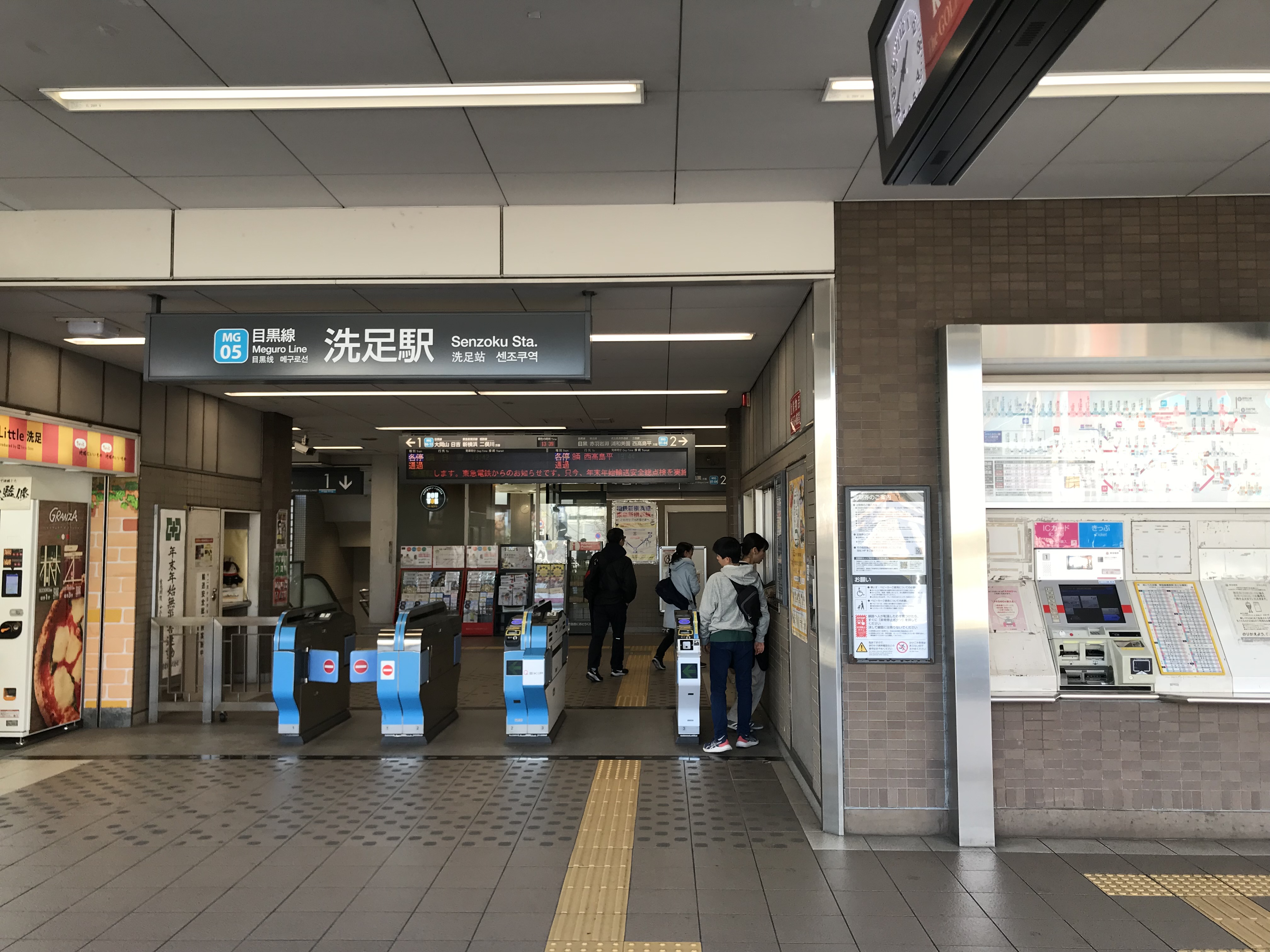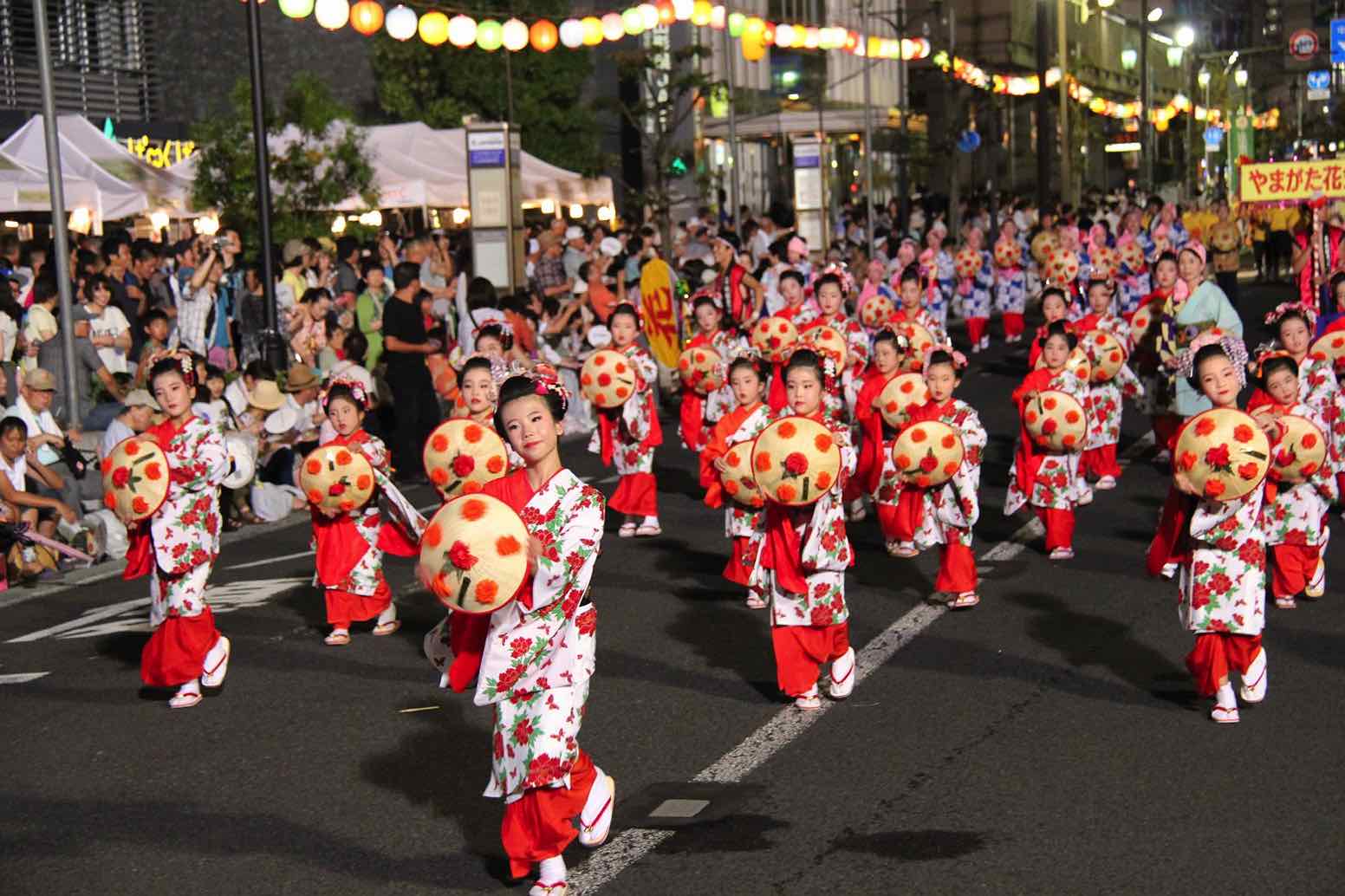Returning to Kagoshima gave me a couple of days to explore this largest city in southern Kyuushu and its surrounding environs. On the first of those I had about half a day after the (rough, but thank goodness for the Japanese equivalent of Dramamine) return jetfoil sailing, so I went to probably Kagoshima’s #1 urban attraction. That would be Sengan-en Garden, which is actually a lot more than just a garden. It’s been the ancestral estate of the local ruling clan, the Shimadzu, for centuries. It commands a stunning view of Sakurajima (though to be fair, that’s not too rare in this town) and some very interesting buildings from the 19th and early 20th Centuries. There is a garden, too – a couple of them in fact, incorporating the looming presence of Sakurajima in the shakkei (borrowed scenery) manner often seen in Japanese garden architecture. It also houses the “Cat Shrine”, Nekogami Jinja. This was established by the 15th Shimadzu lord, Yoshihiro, who took 7 cats with him with an expeditionary army to Korea – because he could tell time on the battlefield by their eyes (the pupils, to be exact).
Wednesday gave me the opportunity for a full day out, making it perfect for a trip to the countryside. After no little deliberation (this part of Kyuushu is not well-served by public transit, at least by Japanese standards) I decided on to check out the Satsuma Peninsula via rail and bus. Ibusuki is the largest town, but I quickly bugged out of there and headed to an onsen called “Healthy Land”, which features the most stunning seaside rotemburo I’ve ever bathed in. It also gave me the chance to try sunaburo, hot sand bathing. It’s certainly a different experience than a traditional bath, but while one does feel like a Dungeness crab in there the muscles get incredibly relaxed. Afterwards you rinse thoroughly and then cool down in a delightful cool bath – but I was still finding sand in particular places even a day later. Also of note is that the onsen had Satsuma-imo – Japanese sweet potatoes and my favorite local veg – cooked in onsen steam for a mere 50 yen a pop. So damn good – I love Satsumaimo generally but of course local ones are the best – they’re named after this place after all.
The scenery on the peninsula is really spectacular – lush green forests, dramatic rocky headlands, terraced rice paddies and fertile fields. It’s dominated by Kaimondake, the dormant volcano known as “Satsuma Fuji” for its resemblance to the likewise perfectly conical Fuji-san. Kaimondake is only about a quarter the height (about 3000’) but from its perch next to the sea it commands vistas for miles around. It’s particularly stunning from Cape Nagasakibana, the second-best southerly point in mainland Japan (the cape just across the bay noses it out by a few kilometres). My stay at the cape was also graced by a pair of hawks soaring the sea breezes, low and close and calling out to each other – wow. Finally I stopped at Ikeda-ko, Kyuushu’s largest lake. It’s undeniably pretty but kind of a tourist trap, and it’s been cashing in for decades on a supposed mass sighting of a sea monster dubbed “Issie”. On the plus side I found a jihanki there with Coke Lime, which I’d never seen before. I’m kind of glad it’s rare to be honest – if I could get it easily I’d be too tempted to drink it every day.
My last day was another partial, with an evening flight back to KIX on tap, so I kept it local. Yoshino Park is one of Kagoshima’s best sakura spots, and it didn’t disappoint. But they were overshadowed for me by another spectacular display from Sakurajima (ironically), of which Yoshino Koen offers stunning views. I can’t imagine this becoming part of the daily routine – for me it’s utterly mesmerizing, almost hypnotic. Afterwards I checked out the Museum of the Meiji Restoration, a smallish but well-executed historical museum near Chuo Station. Satsuma had an outsized role in the Meiji Restoration to be sure, but as much as anything it’s a kind of shrine to Takamori Saigo – who eventually split with the Meiji government and died in the Satsuma Rebellion. Kagoshima and the entire region have a reverence for Saigo that borders on deification – his likeness is everywhere, and information about him has a bit of a propagandist quality to it.
So, will I be back? Well, there are certainly lots of places in Japan still on the bucket list for me, but this region definitely places itself on the shortlist of “must return” locations – places like Koyasan (which I have been back to now), Kiso Valley and the like. It’s a fantastic destination with a hell of a lot to offer, and after two visits to the island I can see why Kyuushu is considered by many Japanese to be the country’s finest place to live. Yakushima especially stands out – it’s just off the charts.
Note: A special thanks to Burcu of Bizarre Journeys and Jennifer from Yakushima Life, who gave me a ton of invaluable itinerary suggestions and advice for their trip. I absolutely got the most out of my time on Yakushima thanks to them!


